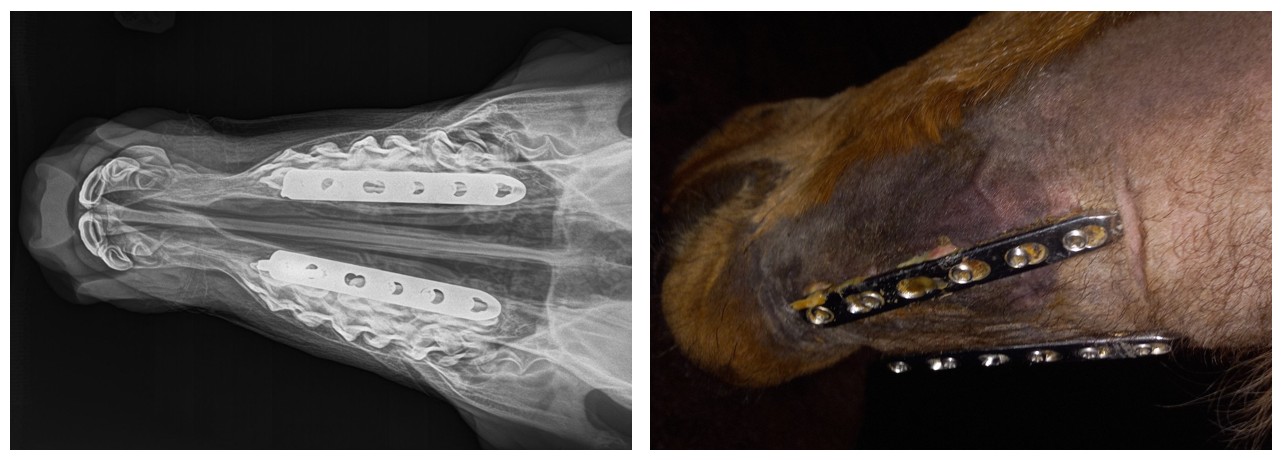
Surgeons Repair Newborn Foal’s Broken Jaw
“Case of the Month” – May 2025
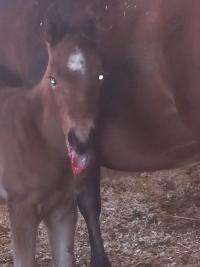
In late February, Amanda Johnson awoke to find a frightening scene in her barn. The jaw of her 5-day-old foal Quincy was bloody and hanging out of place, appearing broken on both sides. She immediately called her veterinarian.
“She was out of town but took the time to discuss the situation with me,” said Johnson. “She suggested I take Quincy to UC Davis. They would have the latest techniques to fix the jaw and give Quincy the best outlook for her future as a performance horse.”
Johnson owns Johnson Livestock, a small American Quarter Horse breeding facility in Gilroy, California. She is a lifelong equestrian who started riding at age 4, began showing her Pony of the Americas at age 7, and moved up to reining as a teenager. As a young adult, Johnson gained an interest in Ranch Versatility Horses.
“We breed about 2-4 horses per year at Johnson Livestock,” said Johnson. “As a boutique breeder, we concentrate more on quality than quantity. We are focused on cutting bred mares or cow horse mares crossed with reiners. We’re trying to achieve an all-around Ranch Versatility Horse – a horse that can be shown in a reining competition and a roping futurity; a horse that’s not pigeon-holed into one discipline but can compete in broader ways.”
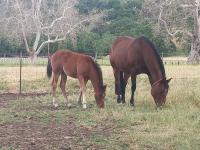
She started Johnson Livestock by buying mares from an American Quarter Horse Association Best Remuda Award-winning ranch in Wyoming after the owner passed away. The Best Remuda Award is the oldest and most prestigious ranching award, created to recognize ranches for their efforts in raising outstanding American Quarter Horses.
Quincy is an example of the quality stock Johnson produces. Her dam is Buckin Bay Rose, a 12-year-old mare by Playboys Buck Fever. Quincy is her fourth foal with Johnson Livestock and sixth overall. The filly’s sire is Call Me Mitch, the second highest earning horse in the history of the National Reined Cow Horse Association (NRCHA). Mitch recently became a Million Dollar Sire and has won dozens of awards throughout his career including the 2023 NRCHA World’s Greatest Horseman Champion.
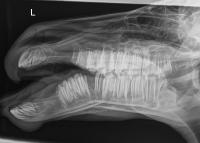
When Quincy arrived at the William R. Pritchard Veterinary Medical Teaching Hospital, she was admitted to the Equine Internal Medicine Service by faculty member Dr. Rana Bozorgmanesh and resident Dr. Nicole Kreutzfeldt and later cared for by faculty member Dr. Fiona Wensley and resident Dr. Hillary Bunay. Apart from the obvious injury, the filly was alert, responsive, and in good health. X-rays showed complete displaced fractures of both of her mandibles. The injury left the foal unable to nurse, so a nasogastric tube was placed for feeding. Faculty surgeon Dr. Sandra Valdez manually reduced the fractures and bandaged the wound for short-term stabilization until surgery.
When Quincy was ready for surgery, the Diagnostic Imaging and Anesthesia Services prepared her for a CT scan to classify the fracture and help the surgeons plan their surgical approach.
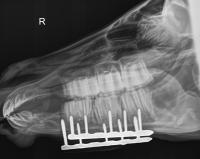
After discussion with Johnson, it was determined that the fractures would be stabilized with external fixators. Faculty surgeon Dr. Scott Katzman and surgery residents Drs. Bridget Ratliff and David Orozco-Lopez reduced the fractures and placed locking compression plates on the exterior of her face. Intra-operative radiographs (fluoroscopy) were used to confirm accurate reduction of the fracture and placement of the external implants.
Quincy recovered well from anesthesia and was able to nurse just one day after surgery. She was hospitalized for the following week before being discharged to continue her recovery at home. X-rays at her two recheck appointments showed appropriate healing, and the fixators were removed five weeks after surgery.
Johnson is happy to report that Quincy’s recovery is complete, and she looks forward to her foal’s bright future.
